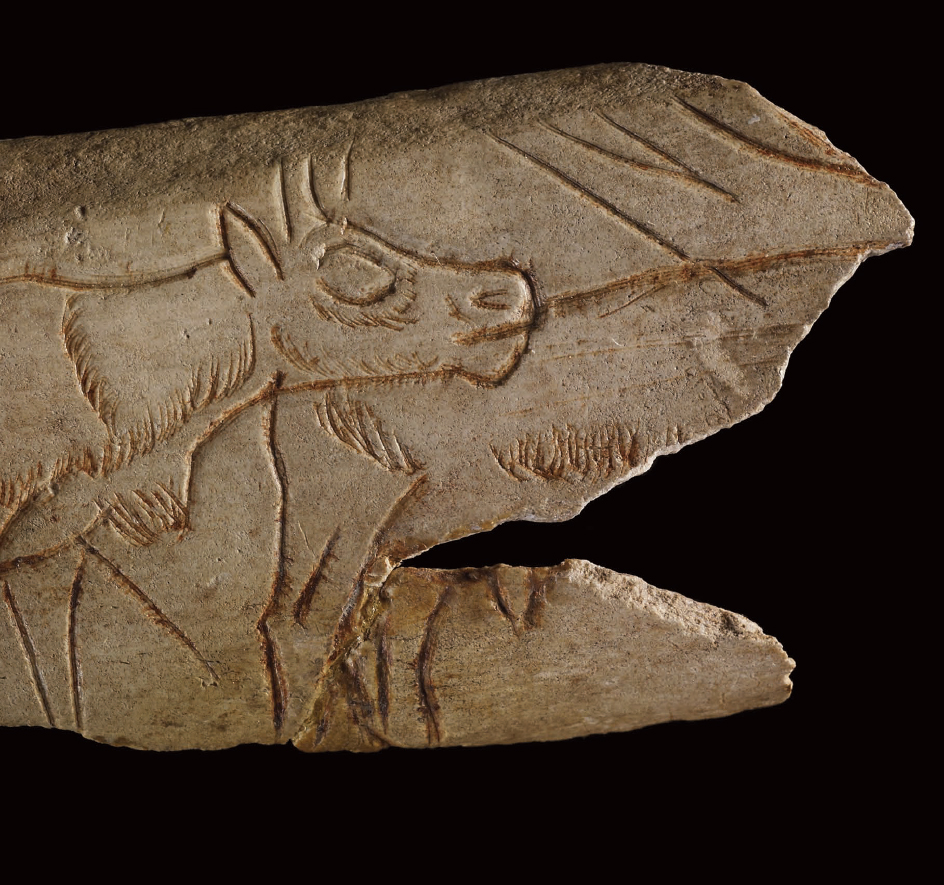see catalogue pieces
Drawing

Realistic drawings of animals engraved on bone, antler and stone are common between 16,000 and 12,000 years ago. These pieces have no practical function. They were conceived and created in much the same way as drawings in historic times. They are the work of practised artists who deliberately selected and often prepared bone or antler of the right size and shape for their compositions.
Artists achieved the remarkable naturalism of animals using stone tools made with special, nib-like tips. Like the modern engraver’s metal tool this is called a burin. Holding the burin like a pencil, the artist could produce various types of line by varying how the width and angle of its edge was applied while incising the material. Broad confident outlines usually contrast with fine shading of the body contours, facial features and variations in the colour patterns or texture of the animal coats. Landscapes and plants are not shown by drawing but the negative space around a subject often creates a sense of depth and perspective to the scene.
This same process of conceiving a composition then selecting the best shape, texture and colour for the material on which to realize the drawing is seen in two modern works by Joseph Hecht. To emphasis the elongated momentum of the charging bison this artist chose a rectangular paper that would frame the outstretched body whereas focussing the eye on the compact form of a seated animal required a square to give height to the rounded back. The engraving technique is also the same with confident outlines and varied line shading techniques used to show the texture of the manes and beards. Although the meaning of the images may be different the concepts and techniques used for engraving drawings is the same as during the late Ice Age.
